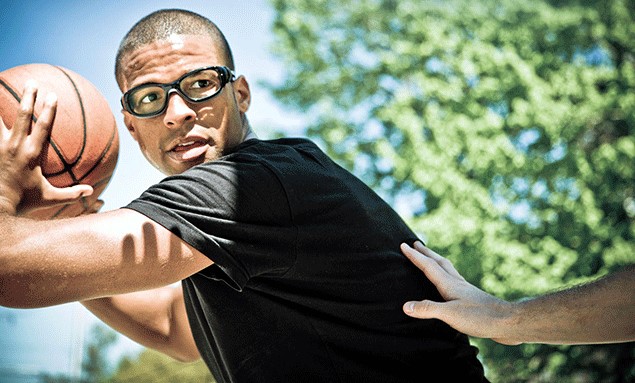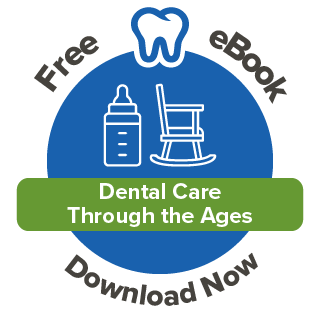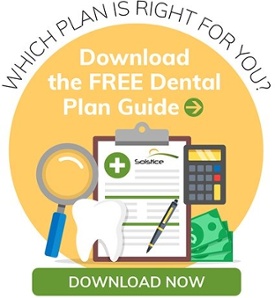By Andrew Hickey on Feb 25, 2025 @ 10:15 AM
Athletes and working professionals alike are used to pushing their limits to achieve success. One aspect that often gets overlooked is eye safety. Whether your terrain is the field, the worksite, or the office, protecting your eyes should be a top priority. Eye safety practices are essential for maintaining optimal vision and preventing long-term damage.
Each year, almost 20,000 eye injuries happen in the workplace. The result is an estimated $300 million per year in worker’s compensation, medical treatment, and lost productivity. In addition, almost 30,000 sports-related eye injuries are treated in U.S. emergency rooms each year. The good news is many eye injuries can be prevented by wearing appropriate protective eyewear.
Key takeaways:
- Neglecting eye safety can have severe consequences.
- Athletes can be at risk of multiple eye injuries: corneal abrasions, retinal detachment, permanent vision loss.
- Work professionals are exposed to various eye hazards: chemicals, flying debris, excessive light exposure.
- Eye safety can be different for each sport or industry: tailor your approach accordingly.
- You will need protective eyewear (as opposed to sunglasses). They’re made from polycarbonate material to handle strong impacts. If you normally wear contact lenses or eyeglasses, you will still need to apply them.
By understanding the specific eye safety requirements, you can implement the necessary precautions to protect your eyes effectively each day. So, let's dive in and discover how you can protect your eyes and excel in your chosen field!
Common Eye Injuries in Athletes and Professionals
The nature of playing a sport can result in direct impact, accidental contact, and exposure to environmental factors. This may lead to injury and even permanent damage if not properly treated. Common eye injuries in sports include:
- Blurred or double vision
- Corneal abrasions: these are scratches on the surface of the eye.
- Hyphema: this is bleeding inside the eye.
- Orbital fractures: these involve the bones around the eye socket.
Similarly, professionals in hazardous environments face unique risks. Working on construction sites or at manufacturing facilities exposes people to various eye hazards, including:
- Chemicals: Chemical burns to the eye can result in severe pain, redness, and vision loss if not promptly treated.
- Flying debris: Foreign objects or debris entering the eye can cause corneal abrasions or potentially lead to infections.
- Excessive light exposure: Prolonged exposure to bright lights or radiation can also result in damage to the retina and other structures of the eye.
Neglecting eye safety in these settings can have severe consequences that affect not only your performance but also your overall wellbeing. Understanding the common eye injuries that athletes and professionals face is essential in implementing preventive measures.
Best Practices for Preventing Eye Injuries in Sports
Here are some key tips to help athletes protect their eyes while staying competitive:
- Wear appropriate protective eyewear: This could be goggles, face masks, or helmets with faceguards. Sports with a higher risk of eye injury include fencing, lacrosse, baseball, hockey, and tackle football. Make sure the equipment fits properly and provides adequate coverage.
- Replace damaged or outdated equipment: It’s important to regularly inspect your protective eyewear. Over time, the effectiveness may diminish. So, it's crucial to keep your gear up to date.
- Practice good hygiene: Wash your hands before handling contact lenses or touching your eyes. Proper contact lens care and hygiene are essential to prevent eye infections and complications.
- Avoid sharing personal items: Use your own personal gear. Sharing towels, goggles, or other personal items can increase the risk of spreading bacteria and infections.
- Be aware of your surroundings: Stay alert and be mindful of potential eye hazards in your environment. Whether it's flying objects, uneven surfaces, or excessive glare, being aware can help you avoid unnecessary risks.
Guidelines for Professionals Working in Hazardous Environments
To protect your eyes in the workplace, it is essential to follow the specific guidelines and safety protocols for your industry. Here are some key recommendations:
- Know the potential hazards: Chemicals, flying debris, excessive light exposure, and radiation are common hazards that can pose a risk to your eyes.
- Use appropriate eye protection: Safety glasses, goggles and face shields can provide the necessary protection against potential hazards.
- Ensure proper fit and maintenance: Eye protection equipment needs to fit properly. It should also be inspected regularly for any signs of damage or wear so it can be replaced as needed.
- Follow safety protocols: These will be established by your workplace. They may include wearing safety goggles in designated areas, using shields when operating machinery, or specific procedures for handling hazardous materials.
- Report any eye injuries or concerns: Any issues with your eye health should be reported immediately to a supervisor or health and safety delegate. Timely reporting can help ensure proper treatment and prevent further complications.
Tips for Maintaining Healthy Vision for Athletes and Professionals
Maintaining healthy vision is crucial both on and off the field. Here are some tips to help you keep your eyes in top condition:
- Eat a balanced diet: Incorporate foods rich in vitamins and minerals that promote eye health. These include leafy greens, citrus fruits, fish, and nuts. A well-balanced diet provides the necessary nutrients for optimal eye function.
- Stay hydrated: Drinking an adequate amount of water helps maintain the moisture levels in your eyes, preventing dryness and irritation. The recommendation is 15.5 cups (3.7 liters) for men and 11.5 cups (2.7 liters) for women.
- Take regular breaks: This is key if your eyes are intensely focused for long stretches, or you are engaged in intense physical activity. Taking breaks will allow your eyes to rest and reduces the strain on your visual system.
- Practice good eye hygiene: Avoid rubbing your eyes excessively. And make sure to wash your hands before touching your eyes. It will prevent the spread of bacteria and potential infections.
- Protect your eyes from UV exposure: Wear sunglasses with UV protection when outdoors, even on cloudy days. Prolonged exposure to UV rays can increase the risk of cataracts and other eye conditions.
Eye Safety Training and Education
Organizations can empower individuals to take responsibility for their eye safety and create a culture of prevention and protection. Both athletes and professionals can benefit from comprehensive eye safety training programs. They can cover topics such as identifying potential hazards, selecting appropriate protective eyewear, and responding to eye injuries.
Keep eye safety top of mind by having reminders and provide resources to reinforce the importance of eye safety.
Eye Safety Resources and Organizations
Numerous organizations are dedicated to promoting eye safety, providing valuable information and support. Athletes and professionals can access valuable information, support, and guidance to enhance their eye safety practices. Here are some notable resources:
- American Academy of Ophthalmology (AAO): The AAO offers a wealth of information on eye safety, eye conditions, and the latest eye care.
- National Eye Institute (NEI): The NEI is a valuable resource for eye health information, research, and education.
- Occupational Safety and Health Administration (OSHA): OSHA provides guidelines and regulations related to eye safety in the workplace.
- National Safety Council (NSC): The NSC offers resources and training programs that cover various aspects of safety, including eye safety.
- Prevent Blindness: Prevent Blindness is a non-profit organization that focuses on promoting eye health and preventing blindness through education, advocacy, and research.
Investing in high-quality eye safety equipment is a small price to pay compared to the potential consequences of an eye injury. By choosing the right equipment you can significantly reduce the risk of eye injuries. If you’re not sure what type of protective eyewear you need, ask your eye doctor or leader/coach for more information.
Want to have Solstice benefits?
Call our sales team at 877.760.2247 or email Sales@SolsticeBenefits.com
Already have Solstice benefits?
See your plan details by going to https://www.mysmile365.com/ or calling us at 1.877.760.2247.





comments